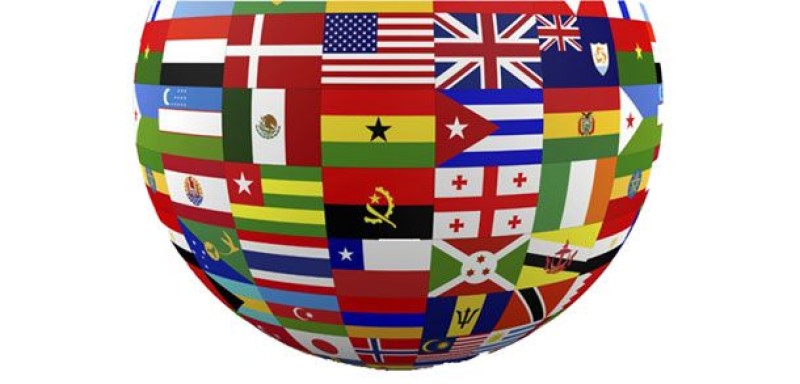Loyalty programs have emerged as one of the key marketing and revenue-generating tools in the global retail banking industry.
Increased strains on costs as well as fluctuating market conditions, however, have forced retail banks to consider and adopt analytical-based loyalty programs. In-depth analysis and customer segmentation help organizations uncover individual spending patterns, behaviors, and market conditions and then develop impactful rewards and offers.
A recent Colloquy report, Global Strategy, Local Tactics, underscores the varying market factors that shape successful loyalty programs. The study conducted research in U.S., Brazil, India, Turkey, and Singapore, and shed light on how local market conditions and attitudes play a strong role in molding loyalty offerings. Much of the differentiation among programs from market to market is fueled by the specific business conditions and cultures unique to each of the five countries. For example, markets with low point-of-sale technology development but high mobile penetration are likely to bypass cash register rewards or offers in favor of mobile offers.
Additionally, the report found that many loyalty practitioners are reverting to programs with short-term functional rewards, such as discounts. This encourages consumers to act in a transactional way and move away from loyal behavior, contradictory to the ultimate goal of loyalty programs.
The report suggests that in response to these findings loyalty marketers worldwide must study regional loyalty success stories as inspiration for developing their own long-term customer engagement strategies. The fundamental principles of loyalty transcend local conditions and tactics, which mean that any firm in any setting can build a program for sustainable, profitable growth.
MasterCard, which delivers loyalty and reward solutions on a global scale, is committed to helping clients achieve this profitable growth with analytical-based rewards programs that are tailored to their individual needs and values. Here, Nandan Mer, the global head of Loyalty Solutions, discusses how MasterCard works with banking clients to achieve a greater degree of relevancy, the changes in the delivery of programs, and mobile's ability to impact loyalty on a global scale.

Customer Strategist: What are your thoughts on the current state of loyalty programs within the retail banking sector?
Nandan Mer: There are a lot new programs ranging from simple points to personalized, highly relevant structured programs. Different brands and companies handle their loyalty programs differently. The first thing that comes to mind when you think about loyalty programs in general is the significant plethora of them. The challenge for both issuers and retailers is to break through the clutter.
CS: Why is breaking through the clutter so difficult?
NM: Let's take an issuer lens. In many markets, the issuers are being constrained by declining spend, a shift in spend from credit to debit, getting better control over spending, and financial well-being.
It is difficult to break through the clutter because the rewards and offers space is crowded. These constraints on issuers only enable them to have a limited number of funding mechanisms for rewards and offers. To overcome this, issuers partner with merchants to share in the cost of a reward or offer. Issuers select cardholders that will have the highest propensity to spend at a merchant store—a win-win for both stakeholders. The consumer also wins by receiving relevant and personalized offers that represent real value and keep them engaged in the issuers' rewards program and keeps their MasterCard in the top of their wallet.
CS: In today's global economy, how are international organizations managing their loyalty programs for consistency among regions? And then how are they tailoring them to individual countries and regions?
NM: Largely these loyalty programs are driven by the economics of the particular country. So if the margins are higher in a country the loyalty programs are commensurate with the margins of the business. Where the margins are constrained the programs are getting constrained. That's a general rule. But they get more specific as companies segment the data. Customer profitability isn't the same across an entire customer base, so the base has to be highly segmented in order to deliver appropriate value to specific segments.
For example, the affluent travel segment provides benefits and rewards that are consistent wherever the traveler goes. For a regional program, segments are driven by the economics of the country and need to appeal to what speaks to the customer segments in that culture. An example of this is the MasterCard Supreenda loyalty program in Brazil. It offers MasterCard cardholders a surprise and delight by providing two reward items each time they redeem—one item for that customer and one to share with family and friends. (Reports show that Brazilians prefer special treats from their loyalty rewards).
CS: What level of technology and detail does this require?
NM: The use of technology is a bigger driver of innovation and cost of delivery, which impacts the end value to which you can provide a consumer. In margin-constrained markets, we find technology is being used much more widely.
Technology is enabling the delivery of rewards and offers through multiple channels and touchpoints: at the POS, through wallets, and via mobile apps and payments. Real-time messaging leverages the authorization system so POS redemption of points can occur. Consumers also now have the convenience of loading all of their loyalty cards into their mobile wallets. This way they can use the offers more readily when a relevant offer is presented to them via a mobile app when they are near a participating retailer. Data analytics and its ability to understand the consumers' shopping behaviors is helping to engage customers in more transactions.
CS: How is mobile changing the game for loyalty programs?
NM: Mobile adds several new dimensions to value proposition and changes the cost of delivery. Because of the availability of the customer and the frequency of interactions with the mobile phone, it's cost-changing. Equally, mobile will also enhance the frequency of communication between brands and end consumers because effective mobile gives brands the ability to establish relevancy regardless of location. If consumers enable a mobile app to identify location of a consumer then relevancy of interaction can be based on geography. If a consumer has opted into an issuers' program in New York and launches the app in Chicago, the issuer can present offers to the consumer while the consumer is in Chicago. You don't get that impact in terms of harnessing that value if a consumer isn't on a mobile device.
CS: Would you agree that mobile is also enabling greater ease of delivery of loyalty programs on a global scale?
NM: The same application applies to an international traveler. We have an asset called Priceless Cities where we bring relevant offers to consumers. As consumers travel from one country to another, we can then make the offers available based on their mobile identification. For example, a customer traveling from New York to London may say he's interested in sports. If there's an offer for an upcoming event in London that will be of interest to him we will present him with that.
CS: Where do you see global loyalty programs headed? What's the future state?
NM: I wish we had a crystal ball. Programs will evolve with greater use of segmentation and greater use of social media and mobile. From our perspective it's more about enabling the success of all the touchpoints in the system. It's a benefit for all these capabilities to support loyalty programs.
Working toward this goal, issuers globally are doing a lot more testing and learning to see what sticks with the cardholder. They're adjusting the programs to fit the consumers' needs and ensuring they're cost effective. There are also senior loyalty champions within the larger issuers that are looking to drive loyalty across the retail banks. They are trying to develop loyalty programs that recognize customers for their entire relationship within the enterprise and also offer banking products and services as redemption items. This comes with challenges as legacy systems and separate business units make seamless integration difficult. Those that succeed will have a holistic view of the customer with the ability to shape their behaviors through loyalty programs.

















